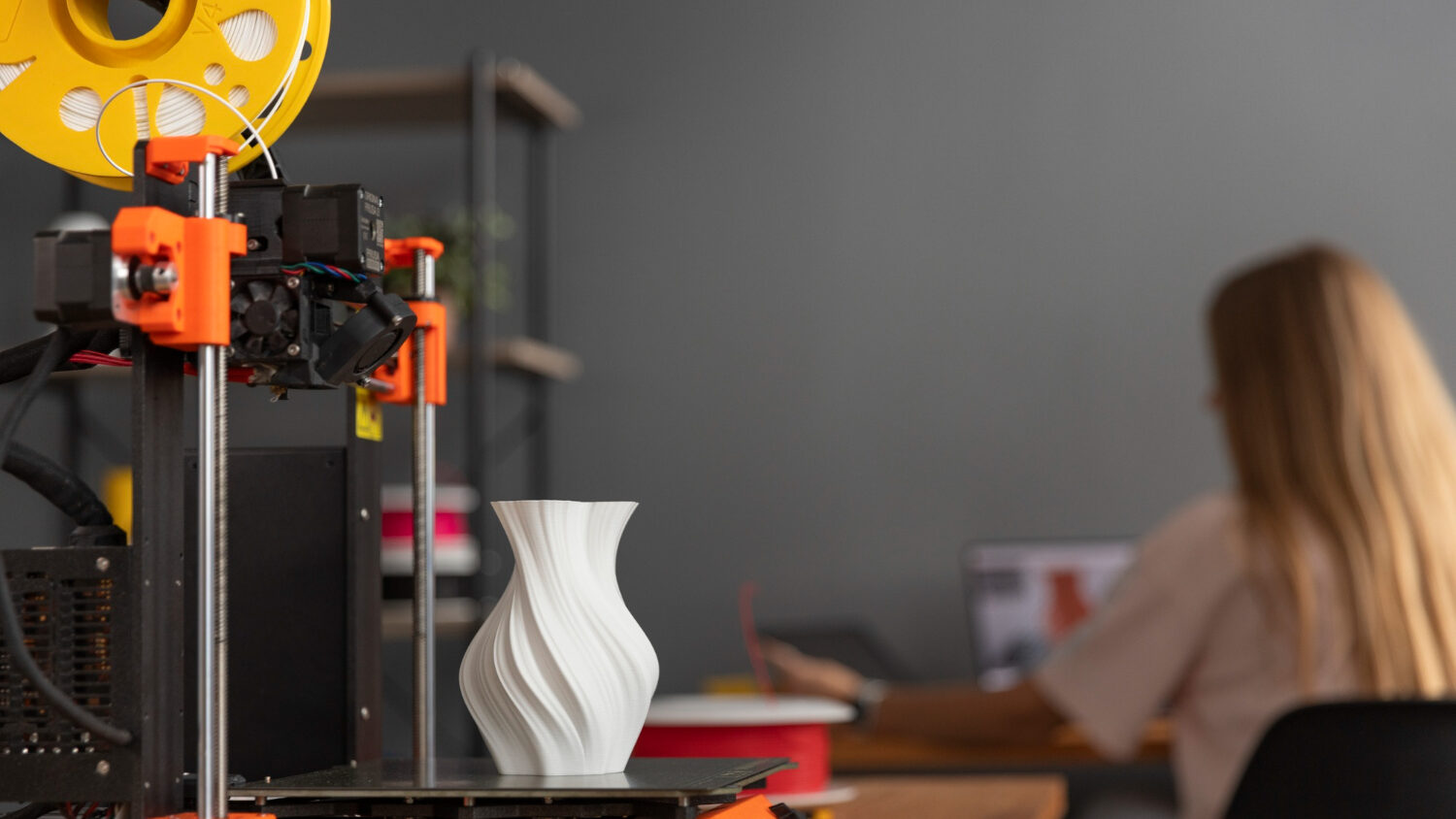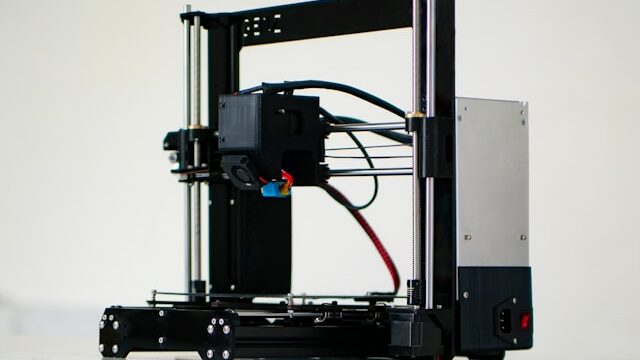Are you wondering about the specific characteristics of ASA in 3D printing? At Imprimy, we’re here to answer all your questions.
ASA 3D printing makes it possible to create objects that are UV-resistant and weatherproof, making it ideal for outdoor applications.

What is ASA?
ASA is a material used in 3D printing, known for its UV resistance and outdoor durability.
Introduction to ASA
ASA, or Acrylonitrile Styrene Acrylate, is a cutting-edge material in the field of 3D printing, offering exceptional UV resistance and remarkable durability, making it ideal for outdoor applications. Compared to ABS, ASA has better weather resistance, while maintaining a smooth and aesthetic finish.
These properties make it a preferred choice for sectors such as automotive and construction, where longevity and visual quality are crucial. Although its cost may be higher, ASA opens new possibilities for innovative projects requiring increased resistance to natural elements.
Comparison of ASA with Other 3D Printing Materials
ASA stands out from other 3D printing materials due to its UV resistance and weather durability, qualities that make it superior to ABS for outdoor applications. Compared to PLA, ASA offers better mechanical and thermal stability, although PLA is more eco-friendly and easier to print.
PETG, on the other hand, is appreciated for its transparency and chemical resistance, but ASA outperforms it in UV resistance and outdoor durability. In terms of cost, ASA may be more expensive than ABS or PLA, but it compensates with its longevity and performance in demanding environments, making it a smart choice for projects requiring increased reliability against natural elements.
What are the advantages of ASA in 3D printing?
The advantages of ASA in 3D printing include its UV resistance, outdoor durability, and weather stability.
UV resistance of ASA
ASA is a popular material for 3D printing due to its UV resistance, making it ideal for outdoor applications. Unlike other plastics like ABS, ASA does not yellow or degrade easily under prolonged exposure to UV rays, thus ensuring better durability and a stable appearance in outdoor environments. This property makes it a preferred choice for projects requiring increased longevity against natural elements.
Durability of ASA
ASA is recognized for its exceptional durability, making it a material of choice for various industrial and outdoor applications. Its UV resistance and weather durability allow ASA to maintain its mechanical and aesthetic properties even after prolonged exposure to the elements.
Additionally, ASA offers superior chemical resistance and thermal stability, ensuring a long lifespan for 3D printed parts. These characteristics make ASA an ideal material for applications requiring long-term reliability, such as automotive components, outdoor equipment, and architectural structures.
Aesthetic properties of ASA
ASA is valued for its aesthetic properties thanks to its smooth surface and matte finish, giving it a professional and well-crafted appearance.
Unlike some other plastics, ASA does not yellow under UV exposure, which helps maintain a stable and attractive appearance over time. Available in a variety of colors, ASA offers great flexibility in design, allowing it to be integrated into various projects that require both functionality and elegance.
What are the different applications of ASA in 3D printing?
ASA is used in 3D printing for outdoor applications such as panels, enclosures, and automotive parts, due to its UV resistance and weather resistance.
3D printing of ASA in the automotive industry
3D printing with ASA finds a particularly relevant application in the automotive industry due to its unique properties. The UV resistance and durability of ASA make it an ideal material for exterior components of vehicles, such as mirrors, grilles, and headlight housings, which are constantly exposed to the elements.
Additionally, ASA offers chemical resistance and thermal stability, which are crucial for automotive parts subjected to harsh environmental conditions. 3D printing allows for rapid and customized production of prototypes and spare parts, thus reducing costs and development times. The aesthetic aspect of ASA, with its smooth and matte finish, also contributes to the neat appearance of vehicles, making it a preferred choice for automakers concerned with the quality and longevity of their products.
3D printing with ASA in architecture and construction
3D printing with ASA plays an increasing role in the architecture and construction sectors, thanks to its advantageous properties. The UV resistance and durability of ASA make it an ideal material for construction elements exposed to the elements, such as facades, cladding, and exterior structures.
3D printing allows for the rapid and customized creation of complex architectural components, offering great design freedom and reducing material waste. Furthermore, ASA provides thermal stability and chemical resistance, ensuring the longevity of structures in various environments. The aesthetic aspect of ASA, with its smooth and matte finish, also contributes to the neat appearance of buildings, making it a preferred choice for architects and builders concerned with the quality and durability of their projects.
Consumer goods printed in ASA
3D printing with ASA is increasingly used in the production of consumer goods due to its many advantages. The UV resistance and durability of ASA allow for the creation of products that maintain their appearance and integrity even after prolonged exposure to the elements, making it ideal for outdoor items such as garden furniture and sports equipment. ASA also offers thermal stability and chemical resistance, ensuring the longevity of products in various usage environments.
3D printing enables customization and rapid production of consumer goods, thus meeting specific consumer needs and reducing time to market. Furthermore, the aesthetic aspect of ASA, with its smooth and matte finish, contributes to the visual appeal of products, making it a popular choice for manufacturers concerned with the quality and durability of their offerings.
Are there any limitations or risks associated with 3D printing ASA?
3D printing with ASA filament presents risks related to toxic fumes, warping, the need for high temperatures, and a higher cost compared to other materials.
The cost of 3D printing ASA
The cost of 3D printing with ASA depends on several factors, including the material volume used, the complexity of the design, and printing parameters such as speed and resolution. In general, ASA is considered a premium material due to its advanced properties, such as UV resistance and durability, which can make it more expensive than standard plastics like PLA or ABS.
However, the initial investment can be offset by the longevity and performance of the printed parts, thereby reducing long-term costs associated with replacement and maintenance. Additionally, 3D printing allows for on-demand production and customization, which can optimize resource usage and minimize waste, contributing to an overall cost reduction for certain specific applications.
The complexity of 3D printing with ASA
The complexity of 3D printing with ASA varies depending on several technical and operational factors. ASA requires precise printing parameters, including a high extrusion temperature and a heated bed, to ensure good adhesion and prevent warping. Managing shrinkage and deformation is crucial due to the thermal properties of ASA, which may require expertise and adjustments in both hardware and software.
Additionally, printing complex parts with fine details or overhangs may require the use of supports and a well-thought-out printing strategy to achieve optimal results. However, once mastered, 3D printing with ASA offers significant advantages in terms of durability and UV resistance, making it an ideal choice for demanding applications requiring high performance and increased longevity.
The environmental impact of using ASA in 3D printing
The environmental impact of using ASA in 3D printing is influenced by several factors. On one hand, ASA is a durable and UV-resistant material, which extends the lifespan of printed products and reduces the need for frequent replacements, thus contributing to a decrease in long-term waste.
However, ASA is a petroleum-based plastic, and its production can have a significant impact in terms of greenhouse gas emissions and the consumption of non-renewable resources. Additionally, the 3D printing process itself can consume a substantial amount of energy, especially for large or highly precise prints. To mitigate these impacts, efforts can be made to optimize material usage, recycle printing waste, and adopt more energy-efficient printing practices.
Ultimately, a balanced approach that considers both the durability of finished products and responsible production practices is essential to minimize the environmental impact of using ASA in 3D printing.
How will ASA 3D printing evolve in the coming years?
In the coming years, 3D printing with ASA filament is expected to evolve towards better accessibility, with optimized materials that reduce warping and harmful emissions, as well as higher-performance printers capable of handling high temperatures while ensuring consistent print quality. This will encourage its adoption in fields such as automotive, architecture, and sustainable outdoor applications.
Innovations associated with ASA 3D printing
Innovations associated with 3D printing with ASA are manifested in several areas, enhancing both the material’s capabilities and the manufacturing processes. Among these innovations are the development of new grades of ASA with improved properties, such as better mechanical resistance and easier processing, enabling more diverse applications. Advances in 3D printing technologies, such as multi-material printing and post-processing techniques, allow for the creation of more complex and functional parts.
Additionally, the integration of sensors and electronic components directly into ASA printed parts opens the door to smart and connected devices. The optimization of design software and printing algorithms also allows for better material management and waste reduction, while improving the precision and quality of prints. These innovations contribute to expanding the uses of ASA in industries such as automotive, aerospace, and construction, where durability and performance are crucial.
The trends of the market for ASA in 3D printing
The trends of the ASA market in 3D printing show a growing adoption due to its advanced properties, particularly its UV resistance and durability. ASA is increasingly used for outdoor applications and in demanding sectors such as automotive and construction, where the longevity of materials is crucial.
The 3D printing market is experiencing significant growth, with a projected compound annual growth rate (CAGR) of 22.66% until 2029, indicating an increased interest in high-performance materials like ASA. Innovations in 3D printing technologies and investments in research and development also contribute to this trend.
Additionally, ASA is appreciated for its ease of printing compared to other materials like PLA and ABS, making it an attractive choice for manufacturers looking to optimize their production processes.
Conclusion: ASA in 3D printing
3D printing with ASA represents a significant advancement in the field of additive manufacturing, offering notable advantages over other materials like ABS and PLA. Its UV resistance and durability make it an ideal choice for outdoor applications and demanding environments, such as those found in the automotive and construction sectors. ASA allows the creation of both functional and aesthetic parts that maintain their integrity over time, thus reducing costs associated with replacement and maintenance.
The 3D printing market is rapidly expanding, with impressive growth forecasts, and ASA plays a key role in this dynamic due to its advanced properties. Technological innovations and continued investments in research and development contribute to enhancing ASA’s capabilities, making its adoption easier across various industries.
In summary, ASA positions itself as a material of choice for manufacturers seeking to combine performance, durability, and aesthetics in their 3D printed products.
Picture by Freepik.
The articles published on Imprimy.com are for informational purposes only. They are intended to provide general advice and information related to 3D printing. Imprimy.com cannot be held responsible for the results obtained or the consequences arising from the application of the shared information. We recommend always checking the specific instructions for your hardware and materials before use.


